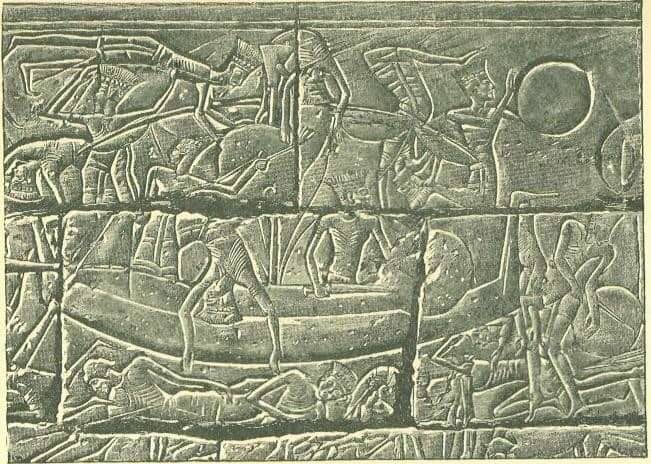The Late Bronze Age Collapse is one of the most enigmatic and tumultuous periods in human history, with its profound impact on the civilizations of the ancient Near East. Among the regions profoundly affected by this era of turmoil was the Levant, an area encompassing present-day Lebanon, Syria, Jordan, Israel, and Palestine. This article aims to shed light on the Late Bronze Age Collapse in the Levant, unraveling its causes, consequences, and the mysteries that still linger today.
Credit: Alexikoua, CC BY-SA 3.0, via Wikimedia Commons
Understanding the Late Bronze Age Collapse
What caused the Late Bronze Age Collapse? So the Bronze Age, from around 3300 BCE to 1200 BCE, witnessed the flourishing of advanced civilizations such as the Hittites, Egyptians, Mycenaeans, and Canaanites. The Levant was a vibrant hub of this period, a crucial trade and cultural exchange crossroad. However, around the end of the 13th century BCE, the region plunged into chaos and witnessed the collapse of multiple civilizations.
Causes of the Collapse
Numerous factors contributed to the Late Bronze Age Collapse in the Levant. One key aspect was the invasions and migrations of the so-called “Sea Peoples.” These seafaring groups from different regions, such as the Aegean and the Eastern Mediterranean, launched large-scale incursions, attacking and destabilizing coastal cities. The arrival of the Sea Peoples disrupted established trade networks and led to political and economic turmoil.
Another factor was a combination of drought, environmental changes, and seismic activity. Climatic shifts, including prolonged droughts, reduced agricultural productivity, and resource scarcity. This likely caused societal instability, food shortages, and migrations, further exacerbating the collapse.
Consequences and Disruptions
The Late Bronze Age Collapse in the Levant has far-reaching implications. Well-established cities were sacked, abandoned, or destroyed, leaving behind ruins still unearthed by archaeologists today. Trade networks collapsed, disrupting long-standing economic systems and plunging societies into an era of isolation and uncertainty.
The Sea People

The collapse also led to a significant decline in writing systems and a loss of historical records, contributing to the overall mystery surrounding this period. The loss of centralized authority and collapse of political structures gave rise to smaller, fragmented city-states and tribal societies that would shape the region’s future.
Legacy and Unanswered Questions
The Late Bronze Age Collapse in the Levant marked a pivotal turning point in the region’s history. It paved the way for the Iron Age, a period of new power dynamics and cultural shifts. However, many questions about the collapse remain unanswered despite extensive research and archaeological investigations.
Scholars continue to debate the precise role of the Sea Peoples and the extent of their impact. Additionally, the interplay between natural disasters, environmental changes, and human agency during this period remains a subject of ongoing research and speculation. Unraveling these mysteries requires interdisciplinary approaches and comprehensive analysis of archaeological, textual, and scientific evidence.
Conclusion
In Short, the Late Bronze Age Collapse in the Levant was a cataclysmic event that transformed the ancient Near East. Its causes, ranging from invasions by the Sea Peoples to environmental factors, disrupted established civilizations and left a lasting impact on the region. While the collapse remains shrouded in mystery, ongoing research sheds light on this fascinating period, providing valuable insights into the rise and fall of ancient civilizations and the complex dynamics of our shared human history.

